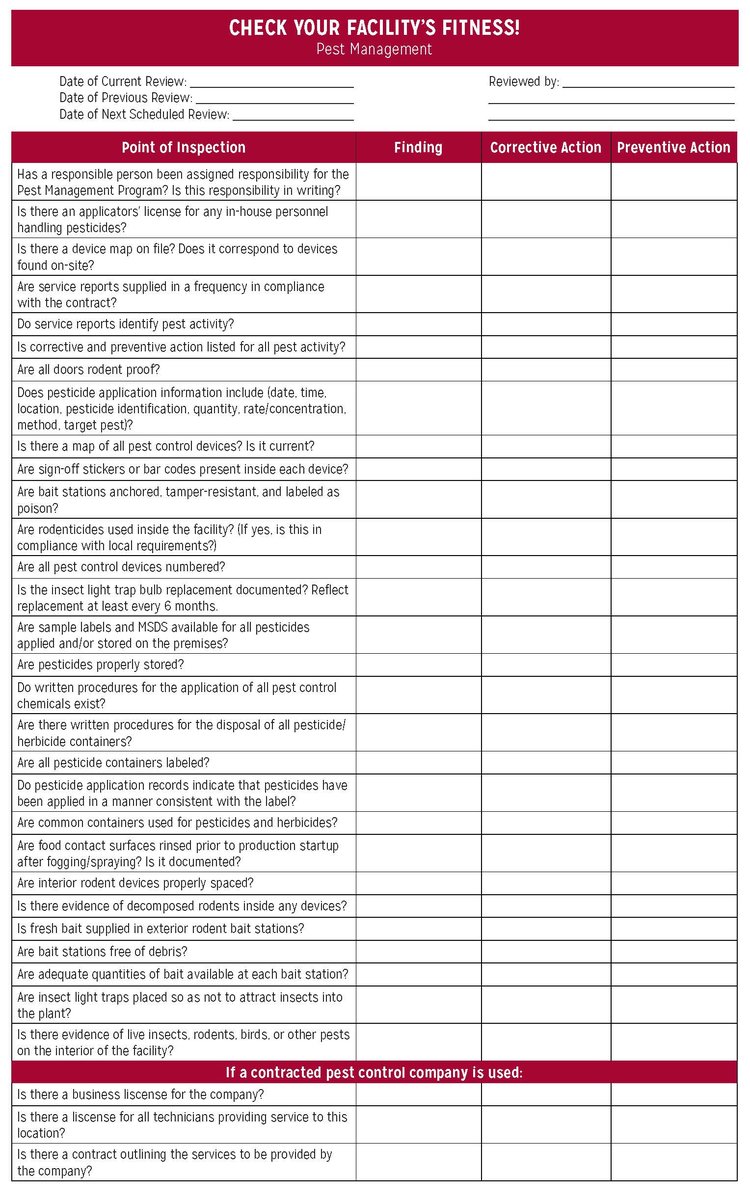 Get fit with AIB! In July our Tip of the Week series is featuring our Plant Education (P.E.) tips to get your facility in shape. Today we're featuring tips on pest management.
Get fit with AIB! In July our Tip of the Week series is featuring our Plant Education (P.E.) tips to get your facility in shape. Today we're featuring tips on pest management.
All facilities handling food are at risk of pest issues. Insects may be introduced to a facility via supplies or people, or they may be attracted by resources available at the facility. Rodents may also be introduced via supplies, but they are mostly drawn to food plants to seek food and shelter. Bird pests in need of food or nesting sites are attracted to food facilities. Pests must be managed to minimize the risk of product contamination. Pests also carry a variety of foodborne diseases, which pose health risks to plant personnel and consumers. Understanding pests’ biology and behavior is critical to establishing an effective Pest Management Program.
Every plant must develop clear and concise procedures that address the scope of the Pest Management Program. The goal of these documents is to specify how situations will be handled. Clear guidelines regarding pesticide application and management of monitoring devices should be developed. Also, procedures for contractor selection and program responsibility can be included.
Many food companies contract pest control activities with an outside pest control company; however, it is the food company that must have oversight of the program. Most devices used for capturing pests are considered monitoring tools. The devices provide evidence of pests that must be addressed at a root cause level. The use of rodenticides inside a facility is strongly discouraged and should only be used in applications where other methods are prohibited by law.
A pest device map is a useful tool for tracking device locations. Inspection reports should include pest activity and other issues that could compromise the effectiveness of the Pest Management Program, such as sanitation or exclusionary issues. Proper design and engineering strategies can help to eliminate pest harborage areas.
Pesticide application information must include the identity of the pesticide applied, the name and EPA number (in the US), the specific location that the pesticide was applied, the concentration and rate of application, the quantity, the method, target organism, date, time, and applicator’s signature. Pesticides stored on-site must be kept locked.
All personnel must be trained to report any pest evidence they may encounter.
It is of little value to have a documented and detailed Chemical Control Program if employees are not aware of the actions they must take. Personnel must also be educated about how proper sanitation and exclusionary measures are necessary for an effective Pest Management Program. At a minimum, anyone performing pesticide applications must be trained in pesticide applications in a food plant. Where required, a license must also be maintained.
Plant personnel who will come in contact with pest monitoring devices should be made familiar with the positioning requirements. For example, someone mopping a warehouse perimeter may move a mechanical trap temporarily to complete the mopping. If this is the case, the trap must not be placed on pallets of product or in any other position that may compromise product. In addition, when the trap is replaced, it must be placed in the correct position for the device to function properly and maximize the effectiveness of the program.
Engineering and maintenance personnel need to have a basic knowledge of pest biology and behavior so that equipment can be properly installed. If they do not understand how their actions impact pest activity it can lead to difficult and costly situations. Each plant should have specific design criteria to prevent conditions that encourage pest activity from developing.
Use this helpful checklist to grade your facility's pest control fitness today!
<a href="http://bit.ly/yogabodyx">All things yoga and yoga body trapeze</a>
Great content that you published. thanks for sharing the valuable content. keep up the great work



